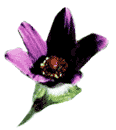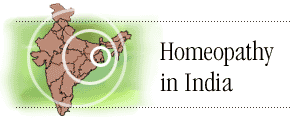Samuel
Hahnemann was born on 10th April 1755, to a porcelain painter of Meissen, Saxony
Germany. He was the eldest of a family of ten. There was not enough to support
a large family & therefore his father wanted him to follow the same trade
as himself. But even as a child he showed an intense passion & wonderful aptitude
for learning, so that even when his father removed him from school, he continued
his studies on his own. Soon his teachers prevailed upon his father to allow the
boy to continue his studies & they offered to forego all their fees. Such
was his brilliance that by the age of 22, he had mastered 9 languages including
Hebrew, Greek, English, Latin, French, Spanish & Italian. Whenever he wanted
to know anything contained in a foreign language, he learned that language &
obtained from it whatever he needed. In 1779, he got his M.D. & set himself
in practice. Besides seeing patients, he wrote many articles on different topics.
He became a recognized authority on chemistry & there are some chemical tests
in use even today that were formulated by him. As a doctor too he was a physician
of such mature reflection & experience, that soon he was accepted as "
one of the most distinguished physicians of Germany".
Yet Hahnemann
himself became more & more disillusioned with the current modes of treatment
which were very crude. In his own words, he said " I have been putting drugs
of which I know little into bodies about which I know even less. To become thus
the murderer or tormentor of my brethren is to me an idea so frightful & overwhelming
that I have decided to renounce the practice of medicine".
Such
was Hahnemann's love for humanity that he gave up his flourishing practice &
endured many hardships & extreme poverty, rather than continue to kill &
harm his fellow creatures.  After
his experiments with the Cinchona bark in 1789, he conducted similar experiments
{ Provings } on himself, his family & friends during a span of 6 yrs. He
recorded
the symptoms thus produced & correlated them with the symptoms of the diseases
they were being prescribed for. In 1796, Hahnemann published his findings in an
article entitled "Essay on the new principle for ascertaining
the curative power of drugs" wherein he explained his theory of Similia
Similibus Curantur. After
his experiments with the Cinchona bark in 1789, he conducted similar experiments
{ Provings } on himself, his family & friends during a span of 6 yrs. He
recorded
the symptoms thus produced & correlated them with the symptoms of the diseases
they were being prescribed for. In 1796, Hahnemann published his findings in an
article entitled "Essay on the new principle for ascertaining
the curative power of drugs" wherein he explained his theory of Similia
Similibus Curantur.
By 1810 , he proved many more drugs to be absolutely
certain about his hypothesis about the mode of action of drugs. It was then that
he published his most important book "The Organon
of Rational Art of Healing". In it he laid down the principles
of treatment of diseases & called this system "HOMOEOPATHY" Hahnemann
strongly criticized the prevalent practices of treating patients & hence there
was stiff opposition to the Organon. Despite this he was granted permission to
teach at the University of Leipzig. Here many broad minded, enthusiastic students
became his followers & started practicing Homoeopathy & also helped him
in proving more & more drugs.
| 

